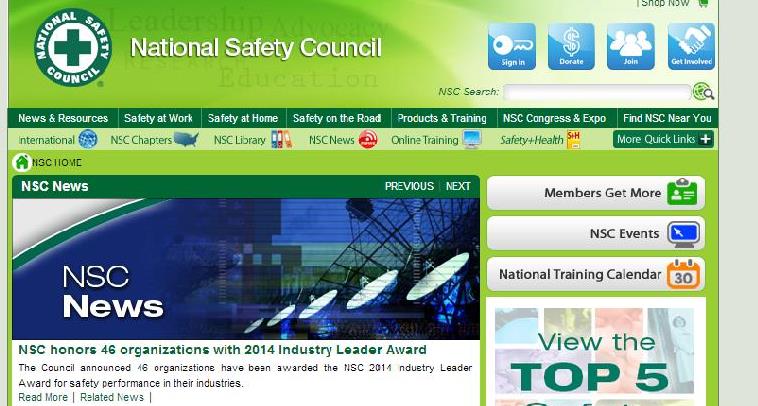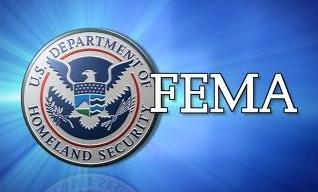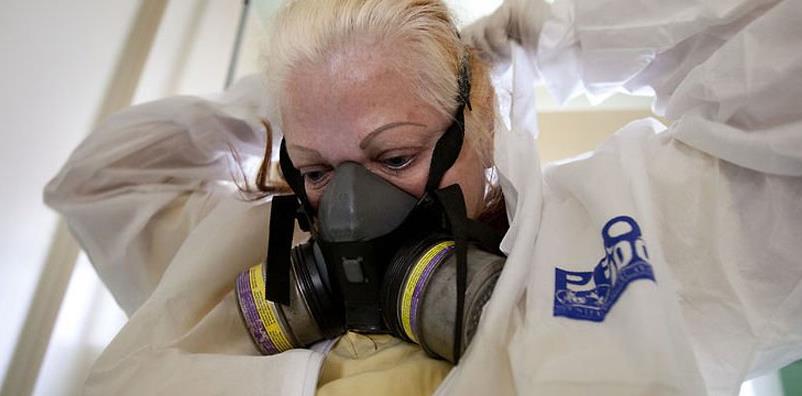
800 818-6493
Help line is answered by a real person
Help line is answered by a real person
SERVICES
MEDIA
RESOURCES
BIOHAZARD
SERVICES
HOME
CONTACT
Double click to edit
Occupational Safety & Health Standards Definition "Occupational Exposure"
The term "Occupational Exposure" is more narrowly defined to include "reasonably anticipated skin,eye,mucus membrane,or parenteral contact with blood or other potentially infectious materials that may result from the performance of an employees duties"
The term "reasonably anticipated" is Not Defined in the blood Borne Pathogen Standard.
O.S.H.A. has consistently declined to establish a threshold Below which the standard does not apply. Interperation is generally left to enforcement.
After an exposure incident occurs OSHA concludes that the employer should have anticipated the exposure or that the exposure has now become reasonably anticipated.
State & Federal OSHA Standards have been expanded to apply to ny employer who has reasonable knowledge of a health hazard exposure and intentionally disregards that hazard.
If such an incident results in injury or death, civil as well as criminal penalties can be levied.
Assembly Bill AB1127 signed into law in 1999 changes California Labor Code.
Labor Code Section 6434 change # 11 is amended to
Delete the longstanding statutory exemption for governmental entities from imposition of Ca. OSAH civil penalties.
Effective January 2000 Governmental entities will no longer be exempt from civil penalties, including failure to abate penalties.
" governmental entities are not exempt from the imposition of civil penalties has been added to P &P c10sec.c6 "
www.dir.ca.gov.dosh/ab1127/memo
Essential Definitions from CCR8. 5193
[OSHA Blood Borne Pathogen Standard ]
OPIM " Other Potentially Infectious Materials"
[1] The following human body fluids: semen,vaginal secretions,cerebrospinal fluid,synovial fluid,pleural fluid,perecadrial fluid,peritoneal fluid,amniotic fluid,saliva in dental procedures, any other body fluid that is visibly contaminated with blood such as saliva or vomitus, and all body fluids in situations where it is difficult or impossible to differentate between body fluids, such as emergency response;
[2] Any unfixed tissue or organ [ other than intact skin ] from a human [living or dead ];
[3] HIV- containing cell or tissue cultures, organ cultures, and HIV or HVB containing culture medium or other solutions: and blood, organs,or other tissues from experimental animals infected with HIV or HVB, needlesticks, human bites, cuts, and abrasions.
" Regulated Waste" means liquid or semi-liquid blood or other potentially infectious materials: Contaminated items that would release blood or other potentially infectious materials in a liqiud or semi-liquid state if compressed: items that are caked with dried blood or other potentially infectious materials and are capable of releasing there materials during handeling: contaminated sharps and pathological and microbiological wastes containint blood or other potentially infectious materials.
Regulated Waste includes "Medical Waste" regulated by Health and Safety code Chapter 6.1 Medical Waste Management Act 117600-118360
TSW# 002. Ventura/ Santa Barbara/ Kern County .
TSW# 228. LA. Orange County ..
TSW# 229 Riverside / San Bernardino . Inland Empire County
TSW #230..San Diego County
The term "Occupational Exposure" is more narrowly defined to include "reasonably anticipated skin,eye,mucus membrane,or parenteral contact with blood or other potentially infectious materials that may result from the performance of an employees duties"
The term "reasonably anticipated" is Not Defined in the blood Borne Pathogen Standard.
O.S.H.A. has consistently declined to establish a threshold Below which the standard does not apply. Interperation is generally left to enforcement.
After an exposure incident occurs OSHA concludes that the employer should have anticipated the exposure or that the exposure has now become reasonably anticipated.
State & Federal OSHA Standards have been expanded to apply to ny employer who has reasonable knowledge of a health hazard exposure and intentionally disregards that hazard.
If such an incident results in injury or death, civil as well as criminal penalties can be levied.
Assembly Bill AB1127 signed into law in 1999 changes California Labor Code.
Labor Code Section 6434 change # 11 is amended to
Delete the longstanding statutory exemption for governmental entities from imposition of Ca. OSAH civil penalties.
Effective January 2000 Governmental entities will no longer be exempt from civil penalties, including failure to abate penalties.
" governmental entities are not exempt from the imposition of civil penalties has been added to P &P c10sec.c6 "
www.dir.ca.gov.dosh/ab1127/memo
Essential Definitions from CCR8. 5193
[OSHA Blood Borne Pathogen Standard ]
OPIM " Other Potentially Infectious Materials"
[1] The following human body fluids: semen,vaginal secretions,cerebrospinal fluid,synovial fluid,pleural fluid,perecadrial fluid,peritoneal fluid,amniotic fluid,saliva in dental procedures, any other body fluid that is visibly contaminated with blood such as saliva or vomitus, and all body fluids in situations where it is difficult or impossible to differentate between body fluids, such as emergency response;
[2] Any unfixed tissue or organ [ other than intact skin ] from a human [living or dead ];
[3] HIV- containing cell or tissue cultures, organ cultures, and HIV or HVB containing culture medium or other solutions: and blood, organs,or other tissues from experimental animals infected with HIV or HVB, needlesticks, human bites, cuts, and abrasions.
" Regulated Waste" means liquid or semi-liquid blood or other potentially infectious materials: Contaminated items that would release blood or other potentially infectious materials in a liqiud or semi-liquid state if compressed: items that are caked with dried blood or other potentially infectious materials and are capable of releasing there materials during handeling: contaminated sharps and pathological and microbiological wastes containint blood or other potentially infectious materials.
Regulated Waste includes "Medical Waste" regulated by Health and Safety code Chapter 6.1 Medical Waste Management Act 117600-118360
TSW# 002. Ventura/ Santa Barbara/ Kern County .
TSW# 228. LA. Orange County ..
TSW# 229 Riverside / San Bernardino . Inland Empire County
TSW #230..San Diego County

PROTECT YOURSELF ON DUTY
Free bloodborne pathogen training.
Officers cover cost of paperwork
Free bloodborne pathogen training.
Officers cover cost of paperwork
Our team is proud to light a village through sponsorship of the Daughters of Charity in the Phillipines.
We personally deliver donations of solar lighting to the survivors of the tsunamis in the Phillipines to help with post disaster aid.
We personally deliver donations of solar lighting to the survivors of the tsunamis in the Phillipines to help with post disaster aid.



























